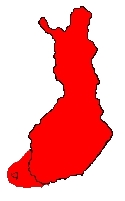
 Dactylorhiza
(maculata ssp.) maculata, maariankämmekkä
Dactylorhiza
(maculata ssp.) maculata, maariankämmekkä
Almost all Finnish know this orchid, it is by far the best-known and most
loved of of our wild orchids. The pink flowers of this species are common
sight in usual Finnish woods and road-sides. 
The plant ahs 3-4 leaves, which are spotted on the upper surface, they are blueish grey from down. The inflorescense grows to 40 cm heigh, and the beautyful flowers are on that stem. There are about 20 nice pink-white floers, which have beautyful markings on the lips.
This loved orchid varies very much. One can find plants with dark red
flowers or plant without any colour. The ways of the variegations of the
lip are endless. Also the spots on the leaves vary, sometimes they don´t
exist, sometimes they almost fyll the whole leaf. In very few occations
they also produge leaves with brown rings. I have one Dactylorhiza like
this in our garden, and it is propably somekind of hybrid. Some specimens look perfectly like D. fuchsii, but I write more
about these plants in the introduction of that species. One of the basic
characters of D. maculata is its endless varying in all ways. Propably
any orchid could never do the same in Finland.
Some specimens look perfectly like D. fuchsii, but I write more
about these plants in the introduction of that species. One of the basic
characters of D. maculata is its endless varying in all ways. Propably
any orchid could never do the same in Finland.
Several named variations are known, such as ver. kolaensis with few large flowers from Lapland and ssp. ericetorum, southern subspecies, could also be found from Finland.
This is the most common of Finnish orchids right after Goodyera. It grows in the whole country. It must be said that this species has now become more common than it used to be when it found new way for its spreading; the species can easily be found on wet road-sides. It has become some sort of pioneer-flower in many places strongly affected by Man, and it only reguires water.
Just a small thought at the end: I have seen some connection between plants in the colour of flower and the way that leaves are spotted: plants with lighter flowers have usually less colour in leaves, too.
The species can only pollinate by a fraud. There is no nectar in the bottom of the thick spur. nayway, seeds produge well. many specimens have very nice, even strong odor. I have once smelled a plant with heavenly odor, and this specimen was also by far the most handsome Dactylorhiza maculata I have ever seen in nature.
The species flowers from June to July, usualy not starting flowering
until mid June. In Ahvenanmaa, anyway, I have seen plants with flowers
in the start of that month.
